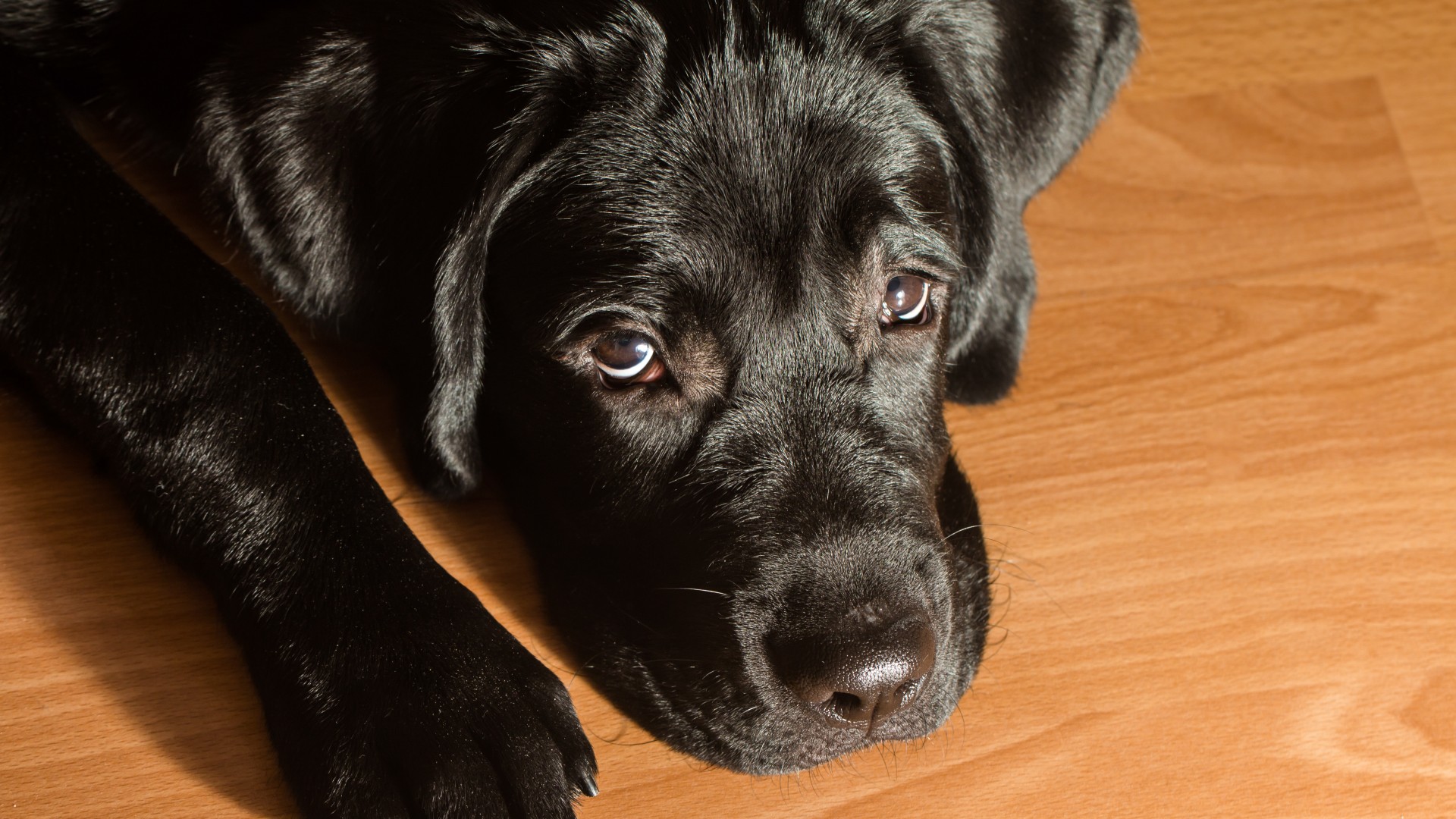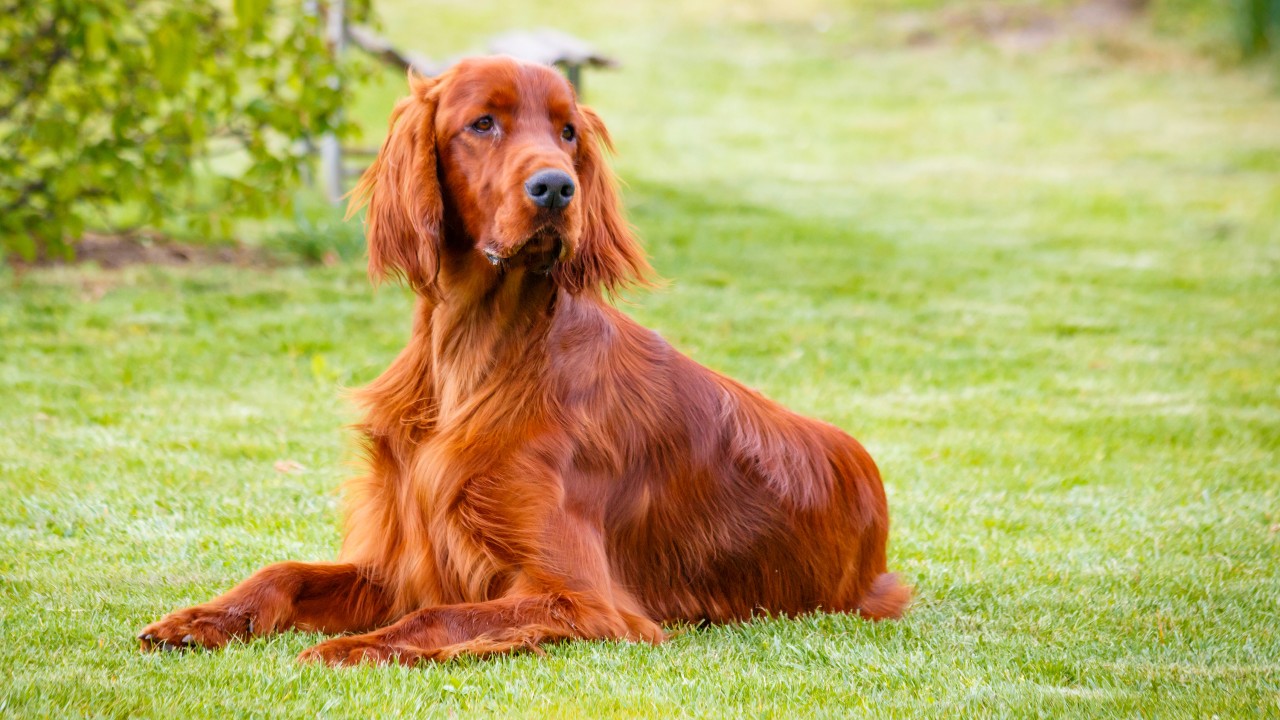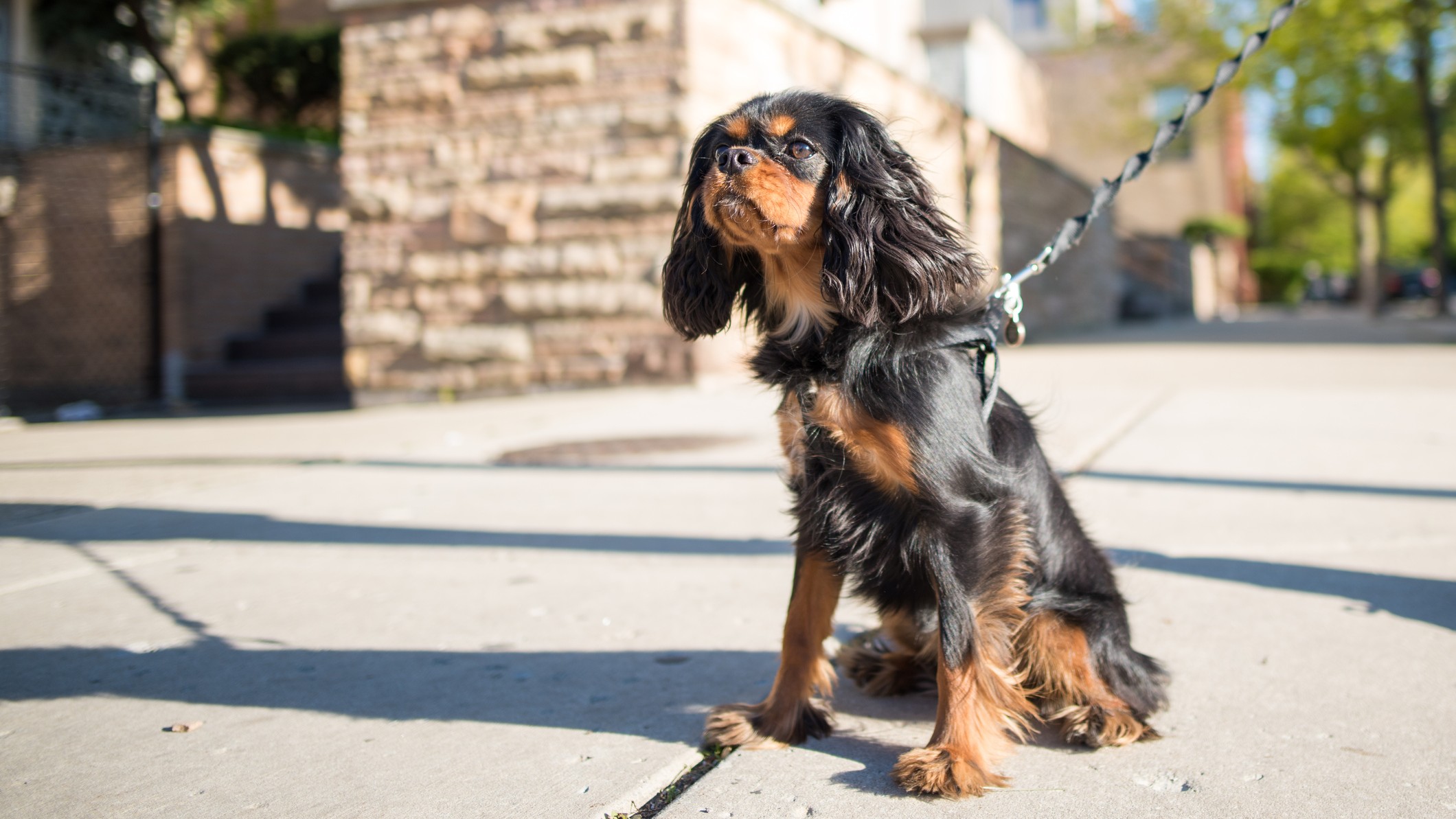How to get a shiny dog coat: A vet's guide
Dr Woodnutt gives her top tips to get a lust-worthy shiny dog coat!

If you’ve ever walked down the street and been struck by a stunningly shiny dog coat, you’re probably wondering how you can get your dog’s coat to be so shiny. Is it a breed thing, a food thing, a grooming regime, or straight-out magic? Actually, it’s probably a combination of all of these things!
This article will detail ways to make your dog’s coat shiny, including tips that go beyond simply grooming your dog. Supplements, foods and even health considerations all factor in keeping your dog's coat healthy; there may be even be some occasions when your dog’s coat might be a hint that they need a vet visit.
What does a shiny coat on a dog mean?
There’s nothing nicer than a shiny coat on a dog and it’s usually taken to be a sign of good health! But is it? What makes a dog coat shine? And does a dull coat mean your dog isn’t healthy?
The lustrous ‘shine’ on hair – including our own – usually comes from skin oils. These coat the hairs and reflect light, making the coat almost appear to glow. A lot of what influences the shiny coat on a dog is making sure they have enough of these oils – but not too many! – and getting the oils to the right place to create the shine.
However, there are times when dog coats are bound to be less shiny. Dogs that are moulting and dogs needing their coat stripped have coats filled with dead hairs – these are naturally less shiny and can lead to a dull coat. White dogs can have very healthy skin and fur without getting much of a visible shine just due to the color of their fur.
Some types of fur are naturally less shiny – it’s very hard to get a wirehaired dog to shine! Dogs that are prone to rolling in mud or dust often look less shiny because of a layer of dirt. Whilst this is easy enough to remove, some dogs will put it straight back again, making it very difficult to get a good shine!
Some illnesses can also cause a dog coat to be less shiny. Any illness increasing hair loss or affecting the skin can cause a dull coat, so the list is long! The most common medical reasons for a dull coat in dogs are:
Get the best advice, tips and top tech for your beloved Pets
- Skin allergies
- Fleas and other parasites
- Obesity
- Arthritis
- IBD and other digestive disorders
- Alopecia (hair loss)

How to improve dog hair growth
If your dog’s hair is sparse, that might explain why they have no shine. Thin hair, brittle and broken hairs, and half-regrown hairs all reduce shine. Getting your dog’s hair to grow back thick and fast can be difficult, but many of the methods for increasing shine will help. For instance, ensuring the skin is parasite-free, and the diet is optimised for skin and coat health will improve your dog’s hair growth.
Ways to make your dog’s coat shiny
So now we know some of the reasons why your dog’s coat is dull, let’s look at how to make your dog’s coat shiny.
You may need to try several of these home remedies for a shiny coat, and some of them can take a while to work – so don’t give up too soon!
1. Change diet
To grow a healthy, shiny dog coat, your dog needs the right nutrition. He should be on a complete and balanced diet suitable for his age and breed. He should be eating the right amount of calories for his ideal body weight. He should also be able to digest it properly – even the most expensive, most complicated dog food is no good if it doesn’t agree with your dog and causes flatulence or diarrhea.
For extra shine, you can reach for diets created for skin and coat health. These usually have salmon and/or salmon oil in. However, it’s more important to get his base diet right and agreeing with him – you can use supplements to add extra nutrients to nourish the coat.

2. Check for obesity
Dogs that are obese are more prone to having dull coats. Whilst they aren’t as fastidious about their grooming regime as cats, dogs do still clean themselves – and obesity prevents this. Obesity also causes inflammation throughout the body, meaning your dog’s skin will be less healthy and he’ll be less able to use the nutrition in his food. Ask your veterinary practice to check your pet’s weight. It’s usually free to have a consultation with a nurse to discuss your pet’s ideal weight and any necessary diet!
3. Add in supplements
Unless you’re feeding a food designed for skin and coat health, you might want to consider adding supplements to your dog’s diet. These supplements ensure your dog has everything he needs to get his skin and coat healthy.
You need to find skin supplements with Omega-3 and -6 fatty acids. Ideally these should come from a fish source rather than a plant source, as there’s some evidence that dogs can better utilize these nutrients from animal sources. However, good skin supplements may also contain Vitamin C, Vitamin E, Zinc, and Biotin.

4. Groom every day and choose the right grooming brush
Grooming helps to move the skin oils over the hair to create shine. It also removes dirt and dust, which can cause a coat to become dull. For the shiniest coat, your dog needs daily brushing. You’ll also need to choose the right brush for the job – check out our guide to the best dog brushes to help you decide. A soft brush works best for moving oils, but you’ll need to detangle first. And, if your dog is molting or has a thick double coat, you’ll need a de-shedding tool.
5. Bathing at the right frequency for your dog
Bathing too often can strip the oils from the skin, causing irritation and removing shine. Unless your dog has a medical condition requiring frequent bathing, it’s best to keep bathing to a minimum. Depending on your dog’s coat type, this might be weekly, fortnightly, monthly, or less often. Ask your vet or a dog groomer if you aren’t sure.
When you do bathe your dog, you need to find a good shampoo for shine. Ideally, this should be as mild as possible, pH balanced for dog skin, and containing conditioning ingredients such as coconut.
6. Work on your dog’s mental health
Dogs with anxiety and stress are prone to skin and coat conditions. Some dogs with anxiety will lick often – causing broken hairs, skin infections, and even bald spots. Others will have a lacklustre coat with no shine. If you’ve tried everything else here, the next step is to consider your dog’s mental health. Are they bored? Stressed? Anxious? Talking to a canine behaviourist may help you to get to the bottom of what’s going on.
Conclusion
Hopefully these tips to get a shiny dog coat will give you a show-ready dog coat to be proud of. However, don’t forget that these things take time – changing diet and nutrition for optimal coat condition can take 6-10 weeks to show an effect, and even then you may have to contend with moulting, an obesity plan, and behavioral issues.
If you’re struggling to get your dog’s coat to be shiny, book a check-up with your vet, who may be able to help.
After graduating as a vet from the University of Nottingham in 2016, Dr. Joanna Woodnutt went on to practice companion animal medicine in the Midlands. She quickly developed a love of consulting and helping clients with medical problems such as dermatology, behavior and nutrition - anything that involved helping clients understand their pets better.
Jo started writing about pet health in 2017, realizing that it meant she could help even more pet parents. Since then, she has written for countless online and print publications and is a regular contributor for Edition Dog Magazine. Jo is the director of The Veterinary Content Company, which she founded in 2020. She is also the founder of Petlearnia, a platform that provides pet e-learning courses for pet parents.
Jo now lives in the Channel Islands with her husband Ian and terrier Pixie.

